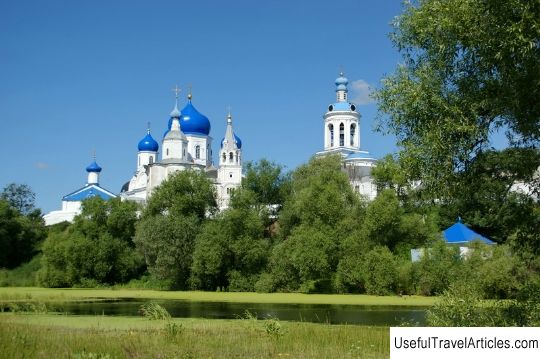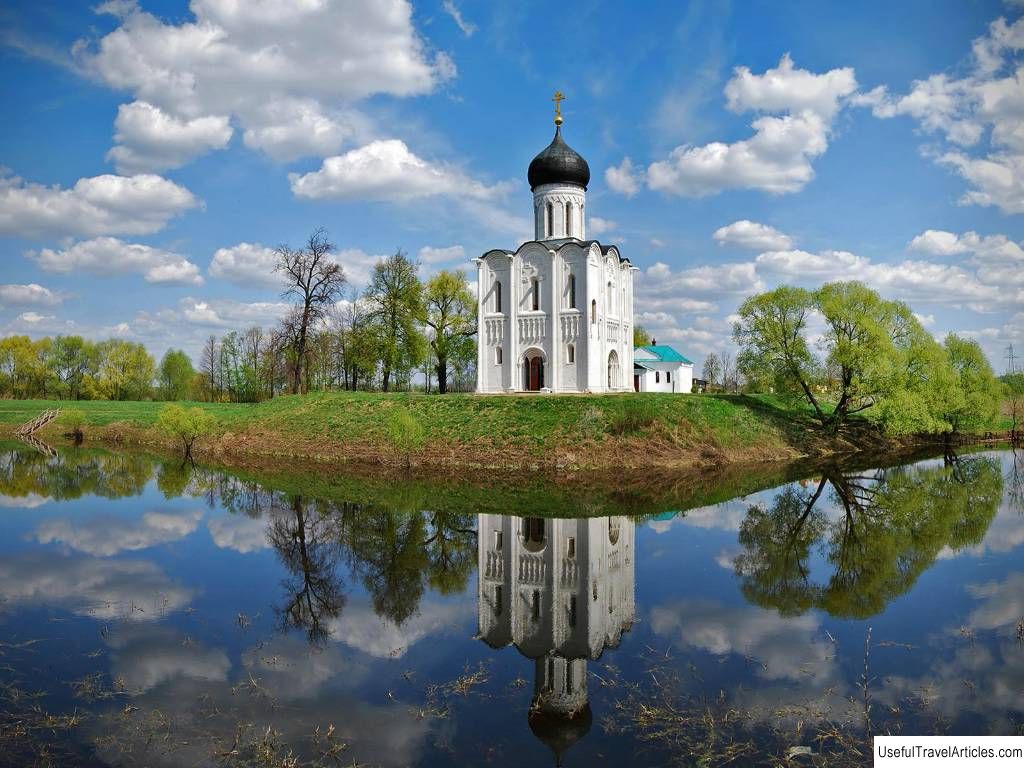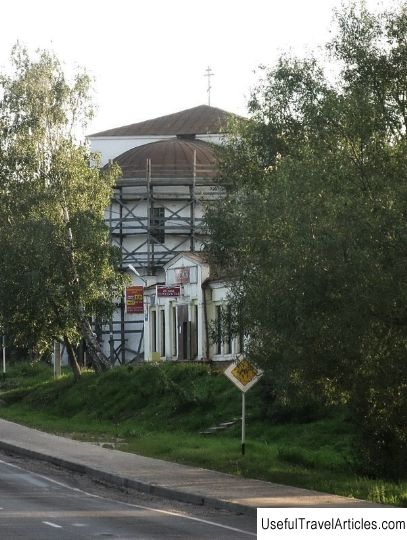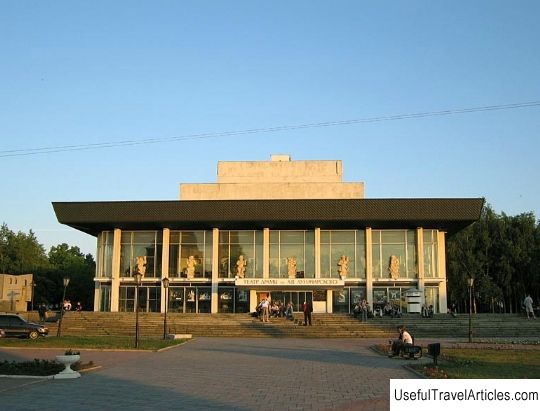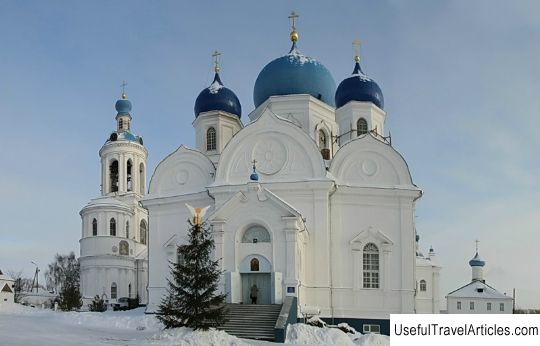Golden Gate description and photos - Russia - Golden Ring: Vladimir
Rating: 7,5/10 (100 votes) 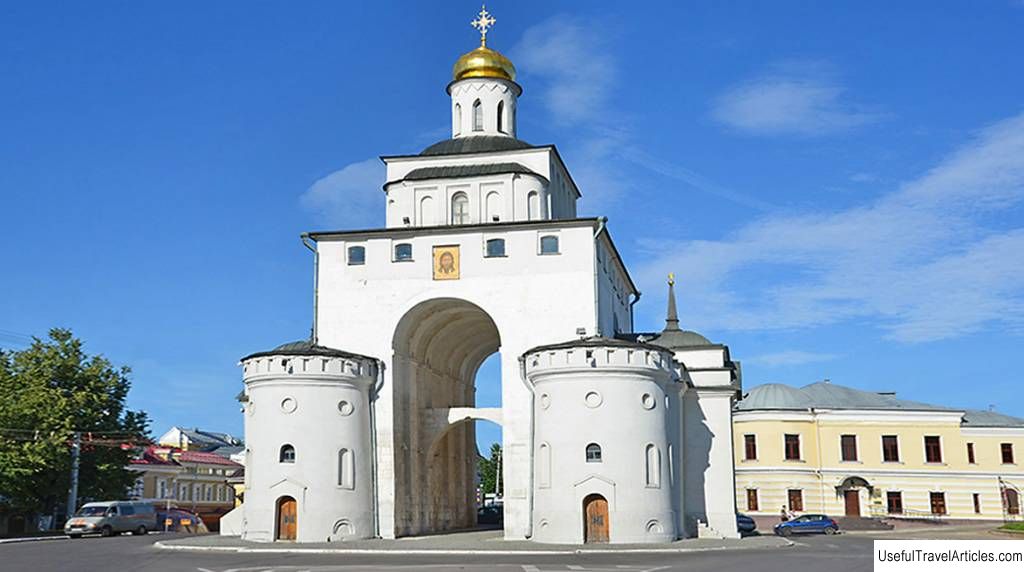
Golden Gate description and photos - Russia - Golden Ring: Vladimir. Detailed information about the attraction. Description, photos and a map showing the nearest significant objects. Photo and descriptionThe Golden Gate in the center of Vladimir - the main entrance to the princely part of the ancient city - was built in the middle of the 12th century. They are included in the UNESCO World Heritage List and are one of the main attractions of the city. HistoryActive construction in Vladimir fell on the reign of Andrey Bogolyubsky . Andrey Bogolyubsky, even after capturing Kiev, preferred to have a capital in the north. And not in the rich Suzdal, which had its own traditions - no, the prince chose a small Vladimir to build the capital here anew. It was near Vladimir, in the village of Bogolyubovo, that he created a residence for himself, but construction began in the city itself. The craftsmen who built Bogolyubovo, the Assumption Cathedral in Vladimir and the ceremonial Golden Gate, belonged to different peoples. According to one of the lost chronicles, several masters were sent to Prince Andrew by the Holy Roman Emperor Friedrich Barbarossa . Indeed, in all their works, the traditions of not only Russian, but also Western European architecture can be traced. In the middle of the 12th century, Vladimir was surrounded by ramparts with wooden walls and a moat. There were seven entrances to the city. The Golden Gate, built in 1164, became the grand princely entrance to the new capital. They really were "golden": their doors were covered with polished and gilded copper and shone brightly in the sun . The gate was not only beautiful, but also truly functional and was an excellent defensive structure. The doors themselves were made of heavy oak; a bridge led across the moat to the gate, and a battle platform was arranged above them, from which one could go to the ramparts. Above, there is another platform with a scalloped top and loopholes. On this upper platform, a small church of the Position of the Robe of the Mother of God was built and consecrated. The arch of the gate itself, 14 meters high and the platform above it, have survived practically unchanged, the rest was being rebuilt. By the middle of the 15th century, the gate was dilapidated. They were restored by the famous architect, merchant Vasily Yermolin . It was he who during these years was also involved in the restructuring of the white-stone Moscow Kremlin, renovation of the cathedrals of the Trinity-Sergius Lavra, as well as the reconstruction of the famous St. George's Cathedral in Yuryev-Polsky. Golden Gate in the 18th-20th centuries In the middle of the 18th century, under Catherine II, provincial cities began to rebuild: dilapidated wooden and stone kremlin were dismantled, regular plans for city development were adopted, and special provincial architects were hired for this. In Vladimir, according to the new development plan, the city walls were torn down - they lost their strategic importance and now only interfered with the passage. When the ramparts were torn down, the Golden Gate was also threatened. The shafts supported the structure and gave it stability. The Golden Gate owes its modern appearance to the then restructuring. In 1795, round turrets appeared on the sides of the building, which hid the reinforcing buttresses attached to the building. The author of the project is the provincial architect Ivan Chistyakov . He created not only the project of the Golden Gate, but also the entire ensemble of the city square and tried to make all buildings look in a single complex and "rhyme". It was planned to transform the main square into a huge parade ground, where it was possible to carry out military maneuvers - this was completely in the spirit of the then reigning emperor Paul I . But he did not have time to fully implement his project of rebuilding the square. The Church of the Robe is being renovated not according to his project, but in a few years. It was renovated in 1810 or 1806 - the exact date is not yet known, and was rebuilt, most likely, according to the project of the next provincial architect - A. Vershinsky. By the thirties, the church is used as a regimental , and the annexes around the Golden Gate house a police unit with a prison station, a warehouse for firefighting equipment and several city shops. By the 50s, the church is almost no longer active. The internal ceilings and the wooden staircase leading to the temple were badly dilapidated - it became simply dangerous to climb there. The staircase was slightly updated for the arrival of the great princes Nicholas and Mikhail in the city, and they forgot again. In 1864, the idea of rebuilding the Church of the Robe Deposition into a building for a water reservoir and the transformation of the Golden Gate into a water tower came up. But in the 1870s, services were resumed. Through the efforts of priest Simeon Nikolsky, the staircase is finally put in order. To the 700th anniversary of the death of Andrei Bogolyubsky, who is venerated in Vladimir as a saint, in 1874 the Vladimir merchants built a Vladimir chapel with icons of the prince in one of the turrets, and in 1898 they gilded the head of the church. At the beginning of the 20th century, in the wake of interest in ancient Russian history and architecture, ideas emerge to restore the historical appearance of the Golden Gate - at least, they were going to restore and upholster the gates with shiny copper, and then no one could already understand why the whitewashed building with a green roof was called "Golden". Even a special commission for restoration was created, but it did not have time to do anything - the revolution of 1917 happened. The church housed the Ministry of Internal Affairs archive , the outbuildings were occupied for housing. The restoration began after the war, but the building was not rebuilt, but replaced the internal furnishings and slightly renovated. Electricity and ventilation were installed here in 1972, at the same time a modern museum exposition appeared. At one time, the building served as a support for a trolleybus line - this negatively affected its condition. Since 1992, the Golden Gate, along with other monuments of Vladimir-Suzdal architecture, have been included in the UNESCO World Heritage List. The last restoration was carried out here in 2001. Military-historical expositionInside the Golden Gate on the upper tier there is now a military-historical exposition . Its main exhibit is a multimedia diorama with lighting and voice acting about the Tatar-Mongol invasion of 1238, the defense and the fall of Vladimir. It was created in 1972. The author of the diorama is the honored artist E. Deshlyt , the founder of one of the schools of the Soviet diorama. Here is a collection of weapons dating back to the 12th century. Swords, shields and details of the chain mail of ancient Russian soldiers; collection of weapons of the 18th century, the period of the Russian-Turkish wars: captured Turkish guns and sabers; commemorative signs and medals of the 18th century; stands dedicated to the war of 1812, etc. The third part of the exposition is the Gallery of Heroes of the Soviet Union , natives of Vladimir and the surrounding area. Here are 153 portraits and some personal belongings of these people. A separate stand is dedicated to the feat of the pilot Nikolai Gastello - he was not a native of Vladimir, but Gastello Street has existed here since 1946. The personal belongings of Vasily Degtyarev - a military pilot, lieutenant, commander of one of the air links that defended these places in 1942. His plane was shot down, he sat down, fired back to the last and shot himself with the last bullet. Another stand is dedicated to cosmonaut Valery Kubasov, a native of Vladimir. Interesting facts
Notes
         Topic: Golden Gate description and photos - Russia - Golden Ring: Vladimir. |

